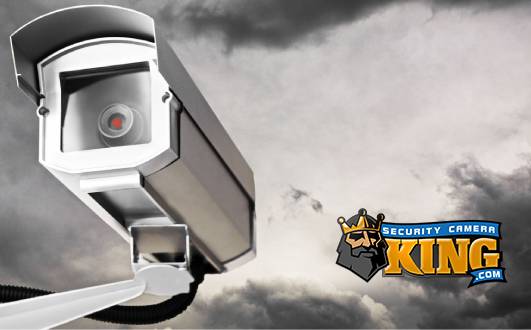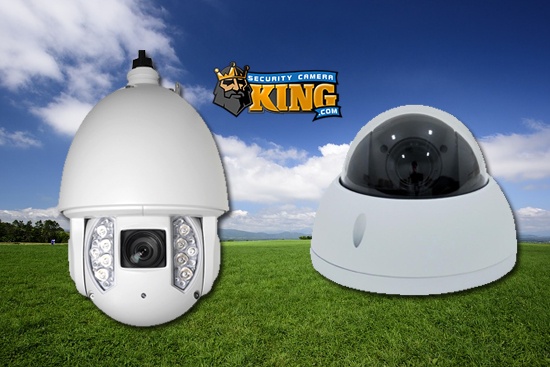Bitrate and Resolution Explained by SCK
Hey everyone, Joe from SCK, and today we’re going to talk about Bitrate and resolution, as well as a bit about framerate. You have heard these terms thrown around before, not just in the CCTV field but just about anywhere. That is because they are fundamental concepts as it relates to the recording and storing of digital video/audio files. No matter what type of recorder you have, be it an NVR, or DVR, IP cameras or COAX cameras, these concepts play a role as it pertains to the file size and quality of your recordings- and therefore how much data you’re able to store- and how much you’re able to see clearly. We’re going to define Bitrate and resolution, as well as a framerate. Then we’re going to explain how framerate, bitrate, and resolution all relate together.
First, let’s talk about Resolution-
To understand resolution you first need to know what a pixel is. In a digital image, hundreds, thousands, or millions of tiny dots are compressed together to make up the picture. The more pixels together, the sharper or more defined the image appears. Resolution is an expression of the total number of pixels in an image or video, so the higher the resolution, the higher the image quality. Some resolutions you might have heard before are 720p, 1080p, and 4k- or 2160p. Taking 1080p as an example this simply means there are 1080 lines of pixels, from the bottom of the screen to the top. Most of the time, this measurement is being shown in an aspect ratio of 16 x 9 meaning it also has 1920 Horizontal lines of pixels from the left of the screen to the right. This is also seen written as 1920×1080 rather than 1080p. This amounts to a total of 2 million pixels, and so you’ll also commonly see this resolution expressed as 2 MegaPixels.
Framerate is next
Framerate is a measurement of how many ‘still images’ per second are displayed to create the motion we see in a video. If you’ve ever looked into how movies are made, you probably know that a movie, or video, is thousands and thousands of still images being displayed in such rapid succession that our eyes perceive movement or fluidity. The more ‘frames’ or images that appear each second determines how fluid the image looks. Most of us have watched a movie before, and for a frame of reference, movies are almost always filmed in 24 FPS (frames per second). The higher the FPS, the smoother and more fluid the image looks, but more data will be needed.
What about bitrate?
The last factor in play is bitrate. In still images (JPEGs and other picture files), the resolution of the single image is a direct correlation to filesize. However, in video files made up of multiple images bitrate is what determines the final file size in any particular video file. In short, bit-rate is the measurement of how much video data exists per second of video footage. It is usually shown as Kilobits per second.- or KBPS. Ultimately the bitrate of the file over the length of time of the video file is what is results in the video’s file size.
Framerate, Bitrate, and Resolution and their relationship.
For non-CCTV applications like video editing for TVs, movies, or streaming, bitrate is usually determined by the resolution and framerate of the video your encoding. Setting a resolution for your encode of a 4k file at 30 FPS will cause the encoding program to choose a bitrate high enough for this purpose.
However, in the CCTV field being in control of how much data you use is very important, and so choosing bitrate is something we can manually set. With CBR- or constant bitrate- you’re given the ability to manually set the bitrate of your video data. Whatever you set this value to will determine the file size per second of video your recording. However, it’s important to choose a bitrate that will make sense for the frame rate and resolution you want to use. Set your bitrate too high, and you’ll consume more data than needed to match your video quality. In this case, your image will look great but you’ll have way less total footage. Set the bitrate too low, and your image quality will suffer in order to ensure the framerate is kept at the selected value. In that case, you’ll get a much lower quality-looking image than the resolution set would normally appear.
Let’s think of it in terms of water filling a glass. In this example, The glass is the bitrate, and the water is the Video data made of both Frame Rate and resolution. For a 1080p file at 30 fps – generally, it’s recommended with recorders to have a minimum bitrate of 2500 kbps to maintain nearly no loss in picture quality while maintaining a fair file size. so let’s say this glass is 2500, and our water (video data) is 1080p at 30 FPS. When we pour our water in, it fits in the glass. What would happen though if we limited the bitrate to say 1000 kbps – and therefore made the glass smaller.
Well as you can likely guess, the same amount of water no longer fits in the glass. In order to be fit into this file size, some quality data is lost as part of the exchange. You’ll fill the glass, but some water ends up poured off the sides (lost data). when using CBR, choose a bitrate suited for your quality and framerate.
Now with VBR, or variable bitrate, the bitrate itself will fluctuate within a given range. What this does is allow you to choose a resolution and framerate you like, and based on the number of changes in the scene that would justify the need for more frames or quality of image, the bitrate will raise or lower itself at a moments notice to compensate. Scenes with little movement or change will stay at a lower bitrate until the scene has movement which causes the bitrate to raise.
Related Media: What is Resolution, and why does it matter?
Find Us On: Facebook | Twitter | YouTube












